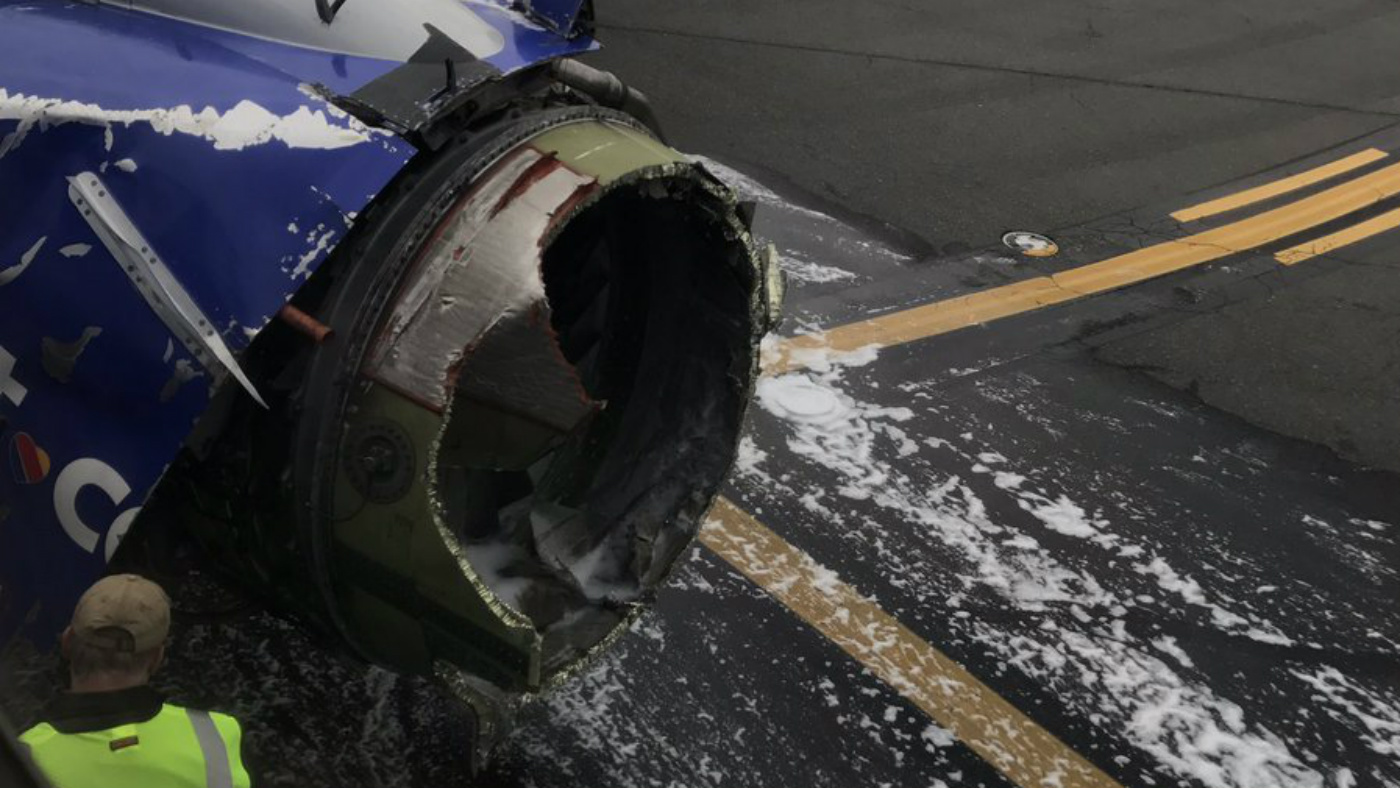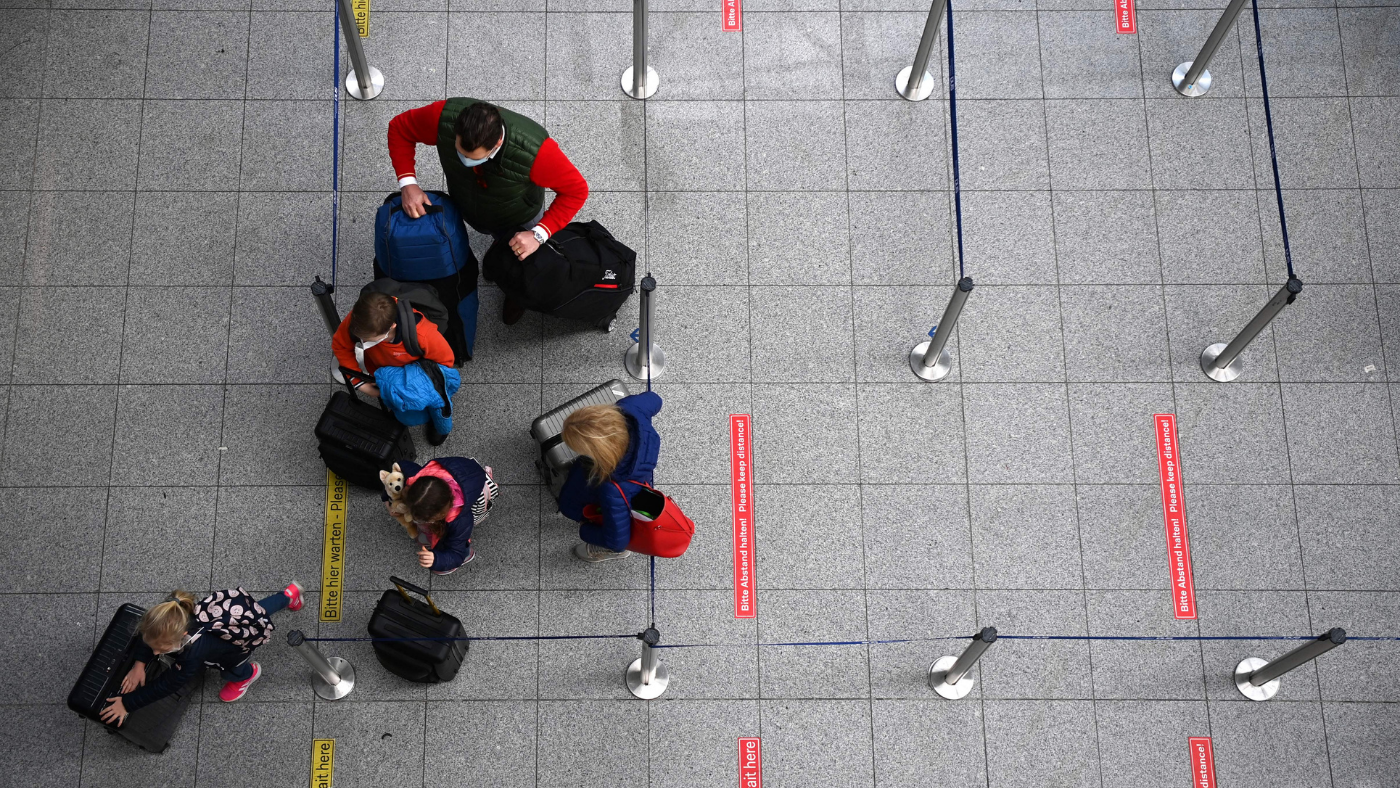What caused Jennifer Riordan to be partially sucked out of plane?
The dead woman suffered blunt trauma to the head, neck and torso, say medical examiners

The cause of Southwest Airlines passenger Jennifer Riordan’s death was blunt trauma to the head, neck and torso, medical examiners have ruled.
Banking executive Riordan was sitting in seat 14A on Flight 1380 from New York to Dallas when she was partially sucked out of a window after the port engine on the Boeing 737 disintegrated in mid-air, puncturing the skin of the aircraft.
Investigators from the US National Transportation Safety Board (NTSB)have had a “preliminary look at the engine that failed”, says CNN.
The Week
Escape your echo chamber. Get the facts behind the news, plus analysis from multiple perspectives.

Sign up for The Week's Free Newsletters
From our morning news briefing to a weekly Good News Newsletter, get the best of The Week delivered directly to your inbox.
From our morning news briefing to a weekly Good News Newsletter, get the best of The Week delivered directly to your inbox.
According to NTSB chairman Robert Sumwalt, one of 24 fan blades was missing and initial inspections “showed there was evidence of metal fatigue where the blade attached to a hub”.
Fellow passenger Peggy Phillips, a retired school nurse who was sitting a few rows in front of Riordan, told ABC that no amount of medical attention could have saved the 43-year-old mother of two.
“If you can possibly imagine going through the window of an aeroplane at about 600mph (965km/h), and hitting either the fuselage or the wing with your body, with your face ... I can probably tell you that there was significant trauma to the body,” she said. “Significant head trauma, facial trauma.”
But why did Riordan get sucked out of the plane? And how likely is it to happen again?
A free daily email with the biggest news stories of the day – and the best features from TheWeek.com
Why does a hole in the plane cause passengers to be sucked out?
During the main portion of a flight, the air pressure is much higher inside than outside the plane, because the air is very thin at 35,000 feet, the height at which most passenger jets fly.
The big difference in air pressure inside and outside the plane becomes a problem if a hole opens in the aircraft.
“If a large enough hole appears, the aircraft is at serious risk of explosive decompression,” says The Sun. “The air inside the cabin would be pushed to the outside incredibly quickly - as fast as 0.5 seconds.”
Phillips told ABC this is exactly what happened in Riordan’s case.
“The window had broken and the suction, the negative pressure, had pulled her outside the plane partially,” she said.
Can you survive being sucked out of the plane?
Aviation experts believe there is a strong chance of survival for even passengers sitting beside the hole, provided their seatbelt is fastened.
Thomas Anthony, director of the University of Southern California’s Aviation Safety and Security Programme, told The Verge that passengers who are still anxious about the potential risk should probably avoid the window seat.
He added: “I think that it all depends on the location of the depressurisation.”
In 1990, British Airways pilot Tim Lancaster was partially sucked out of the cockpit during a flight from Birmingham to Malaga and survived.
“He suffered from frostbite, fractures to his arm and wrist and a broken thumb and was flying again within five months,” says The Sun.
How likely is it to happen again?
Very unlikely. When the ill-fated Southwest Airlines flight departed from New York La Guardia for its home base at Dallas Love Field on Tuesday, the airline had flown 1.8 billion passengers safely during its 47-year history.
“The aviation industry, and the safety regulators who govern it, are obsessive about every detail of a flight: engineering out danger and looking deep into the soul to reduce the risk created by human factors,” says The Independent’s Simon Calder.
“That is why the two biggest budget airlines in Europe, Ryanair and easyJet, have never suffered a fatal accident.”
-
 ‘We need to reassess our toxic relationship with flying’
‘We need to reassess our toxic relationship with flying’Instant Opinion Your digest of analysis from the British and international press
-
 Owners increasingly believe their pets go to heaven
Owners increasingly believe their pets go to heavenSpeed Read And other stories from the stranger side of life
-
 Burglar caught after leaving left name and address at scene of crime
Burglar caught after leaving left name and address at scene of crimeSpeed Read And other stories from the stranger side of life
-
Killer whales declare war on Spanish fishing boats
Speed Read And other stories from the stranger side of life
-
 Police seize more than 320,000 used condoms
Police seize more than 320,000 used condomsSpeed Read And other stories from the stranger side of life
-
 Airline’s ‘flight to nowhere’ sells out in ten minutes
Airline’s ‘flight to nowhere’ sells out in ten minutesSpeed Read And other stories from the stranger side of life
-
 Man blows up his house trying to swat a fly
Man blows up his house trying to swat a flySpeed Read And other stories from the stranger side of life
-
 Instant Opinion: ‘The battle for decency online’
Instant Opinion: ‘The battle for decency online’In Depth Your guide to the best columns and commentary on Monday 16 March


